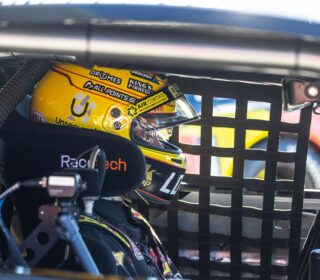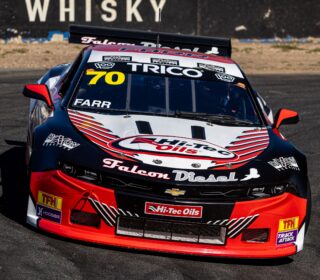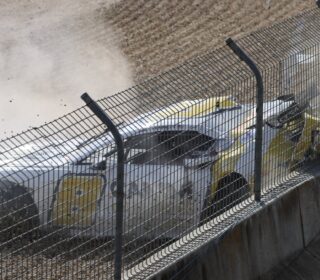FIRST LOOK: S5000 under construction

HERE’S a first look at S5000-01 under construction at Borland Racing Developments in Melbourne.
The Race Torque was part of a small group of potential owners and media invited to the suburban Melbourne factory to check out how the build is progressing following the arrival of the first Ligier / Onroak chassis from the United States.
The chassis has been mated to the existing 560-horsepower Ford Coyote engine and six-speed Hollinger gearbox / Transaxle unit that has already been run in the initial Swift chassis that kicked off the concept several years ago.
The Ligier chassis is almost identical to the same supplied for Regional Formula 3 with only slight differences for the local market.
VIDEO:
With the carbon fibre supplied from Italy, the chassis ends up in the United States at the Onroak factory in Denver, North Carolina before heading to Australia.
The cars have been given their own chassis number, with the first car under construction dubbed JS F3-S5000-001.
Other changes include a new 1.5-centimetre thick solid carbon-fibre plate that separates the front of the tub and the front nose box and wing assembly.
The addition was made mandatory by the FIA following the shocking accident that saw Billy Monger lose both his legs in a British Formula 4 crash in the UK last year.
Other alterations include a unique adapter plate between the rear of the chassis and the engine.
With structural changes not permitted to any FIA homologated chassis – S5000 couldn’t add new holes to suit their existing mounting system developed for the Swift chassis – instead a beautifully engineered, CNC-machined adapter plate has been designed to join the two.
That, in turn, is then bolted and bonded to the rear of the tub with the engine bolted to that.
Physically the car is surprisingly large, with a wheelbase almost identical to the current Dallara IndyCar.
The chassis itself is notably larger than an existing Formula 3 car and almost exactly matches the physical dimensions of the Swift Formula Nippon chassis that was originally proposed for the car. It should suit drivers of varied sizes extremely comfortably with the pedal box in particular allowing plenty of room.
The categories promise of close racing without significant aerodynamic input also looks, from the outside, to be one they will be able to live up to.
The front wing is simple and funnels air into two tunnels beneath the car, meaning much of the car’s downforce will be generated from the underside of the car, rather than the top. This should promote closer racing and enhance the driver’s role in proceedings.
The car has an imposing physical presence and already is a stunning convergence of the current global standard in open-wheel design and construction mated with some good, old-fashioned Aussie engineering.
The anticipation to see this the car run builds with every week – we can’t wait.
WORDS & PHOTOS: Richard Craill







